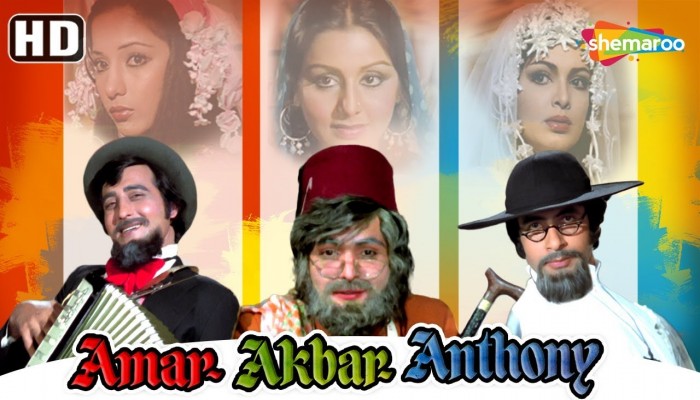The journey of Amar Akbar Anthony: Celebrating Indian secularism with Grassroot identities
- In Movie Reviews
- 12:44 PM, May 28, 2020
- Ranabir Bhattacharyya
It has been 43 years since Manmohan Desai's cult classic Amar Akbar Anthony was released. Not only was it the biggest blockbuster of 1977, but also it became a great milestone film adding different shades to commercial Hindi popular cinema. Considering the plot itself, there is no great difference with the melodramatic films released in that era. But there was indeed a deviation from the trend even though it followed the convenient lost-and-found theme, reuniting family to avenge the prevailing social injustice. The highlight of the narrative lies in the fact that the three siblings took refuge in homes belonging to India's three major religions.
Indian pluralistic society is strikingly different from the other countries i.e. the diversity of Indian culture is bigger than the mainstream Christian narrative or the Islamic world. Let's not forget, that Amar, Akbar and Anthony, the siblings separated by incidents, were born of Hindu parents. The majoritarian dominance of the Indian society didn't impose upon them the religious instincts with narrow religious mindsets. On one hand, the film depicts an Indianized version of secularism and on the other, the growing acceptance of other religions in the mainstream of the Indian society. The iconic scene in the film is the separation of the three young boys from one another at the foot of a statue of Mahatma Gandhi. Amar Akbar Anthony defined an Indian brand of tolerance in Indian films. This has remained a true secular manual for Indian films for more than four decades.
Let's not forget the fact that a year before the release of Amar Akbar Anthony, the ruling Congress Party amended the Constitution of India. The Preamble to the Constitution of India was also altered by the Indira Gandhi government. From 'unity of the nation' to 'unity and integrity of the nation' – although the Congress failed to live up to its promise as it imposed National Emergency. However, Amar Akbar Anthony played its part in showcasing what national integration is or ought to be, amidst all class differences. After all, Kishanlal's fragmented family was a miniature India with a multicultural fabric and inter-religious harmony. The subtle use of mythology and devotional genre in the film by Director Manmohan Desai played a cohesive role in showing the spiritual power of religion in uniting the society and not dividing it across religious differences. Therein lies the success of the film and the subsequent emotional quotient was a gamechanger in making the film a blockbuster one!
Often it is said that commercial Bollywood films have evolved into the social void. But Amar Akbar Anthony has the distinct deep-rooted message of brotherhood with a sense of tolerance. In spite of following Manichean dualism of good and bad, this musical melodramatic film where the protagonists speak the popular lingo of erstwhile Bombay never failed to catch the essence of Indianness. The positive essence and inclusive view of the Hindu majoritarian secularism of Amar Akbar Anthony will always remain commendably relevant in the history of Indian cinema.
Image provided by the author







Comments